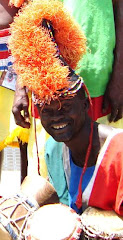 If you are into eco-tourism, bird watching, or looking to go on safari, you can find it all here in The Gambia.
If you are into eco-tourism, bird watching, or looking to go on safari, you can find it all here in The Gambia.
Bijilo Forest Park
Is one of the several forest parks in the Gambia, but is primarily a nature reserve. It covers 51 hectares and is easily accessible with its location in Kololi along the coast near the Senegambia tourist area.
This park is popular for its birds and monkeys. It is well worth a visit if you are looking for a morning walk.Lamin Lodge Situated on the edge of the creeks, this huge tree house style lodge offers a wonderful view over the mangrove swamps and is an ideal spot for bird watching. Small boats can also be hired from here.
Makasutu Culture Forest (“Holy Forest”)
Makasutu Cultural Forest, the name Makasutu is a Mandinka word, which translates into English, as “Holy Forest”. There is a history to this dwelling. Legend has it that tribal wars took place in this forest centuries ago.
A particular King was also killed here, and his head, crown and throne were all buried in the forest.The local community avoided the area, for another reason: the legend also states that the devil lived in this forest!
Nevertheless, the owners of this beautiful resort forged ahead and began a venture that would, after almost fifteen years, earn them a reputation as having The Best New Eco Lodge in The World, according to Sunday Times in 2002.Another award was bestowed on the serene lodge two years later with the capping of the prestigious "Guild of British Travel Writers Award." This comes as no surprise.
Surrounded by six villages, Makasutu Cultural Forest is an all-in-one excursion and is all that the international media, and the world travel body have described it. A safari drive, a guided forest walk, a boat ride, bird watching, and cultural entertainment galore are all at ‘Makasutu’.There is a craft area where local artists show their talent and skill in wood carving, design ware and other traditional African artifacts.
Winner of the Eco Tourism Award 2005Abuko Nature Reserve An all time favourite for wildlife and birdwatching. Gambia's oldest protected area. It covers 105 hectares in western Gambia near the Atlantic Coast. The reserve protects a large tract of gallery forest, and it is paricularly noted for its birds and monkey populations. See some of the most colourful birds in the world - over 360 species live in The Gambia.
Baobolong Wetland Reserve
Located on the northern bank of the Gambia River in central Gambia, opposite Kiang West. This wetland covers 22,000 hectares and was designated as Gambia's first Ramsar site (the convention on wetlands of international importance).Kiang West National Park Located on the southern bank of the Gambia River in central Gambia.
Its 11,000 hectares are dominated by dry woodland vegetation, with areas of mangrove and mud flats. River Gambia National Park More commonly known as Baboon Islands. It is a 580 hectare park covering five mid-river islands near Georgetown in eastern Gambia. It was established mainly as a rehabilitation sanctuary for chimpanzees. Visitors are not permitted on the island.
Niumi National Park
In the northwest of Gambia, contiguous with the Parc National du Delta du Saloum in neighbouring Senegal, and incorporates the coastal island of Ginak. It covers 5,000 hectares and features dry woodland, sand dunes, mangroves, salt marches and lagoons.
Tanji River Bird Reserve
Is located on the coast, in western Gambia. Its 612 hectares include dunes, lagoons, mangroves, dry woodland and is popular for the variety of birds which can be seen in the reserve.
Tumani Tenda Eco-Tourism Camp
Tumani Tenda is a Jolla Village with approximately 300 inhabitants living in seven extended families. It is situated 25 km East of Brikama and 3 km from Kafatu, an tributary/Bolong of the Gambia River.
This small hamlet derives its name from a peanut picker, called Tumani, who lived in the area; Tenda means riverbank. The founder of the village, the late Alhaji Osman, a Koran scholar, established the community 30 years ago after immigrating from Casamance.
A community evolved which is described as a religious community embracing certain values, notably a sustainable attitude to the natural environment, a socially responsible style of living, respect for the elderly, independence, self-sustainability and a sense of community.
Tumani Tenda owns 140 hectares of land, of which 89 are sustainably cultivated, with a species rich forest that is continually upgraded with seedlings and serves as a pharmacy and natural water reservoir. Plants and crops grow in abundance and include maize, millet, groundnuts, vegetables, herbs and spices, bananas, grapefruits, oranges, mangoes, lemons and many others.
Contact details and Reservations:
Luigis Complex for the best Gambian self-catering apartments, serviced flats, beachside accommodation, bed and breakfast, restaurant and eco-tourism excursions.
Relax and enjoy your Gambia Holidays with us!
info@luigiscomplex.com
www.luigis.gm/
Tel +220 4460280
 Kanilai International Cultural Festival
Kanilai International Cultural Festival


















































